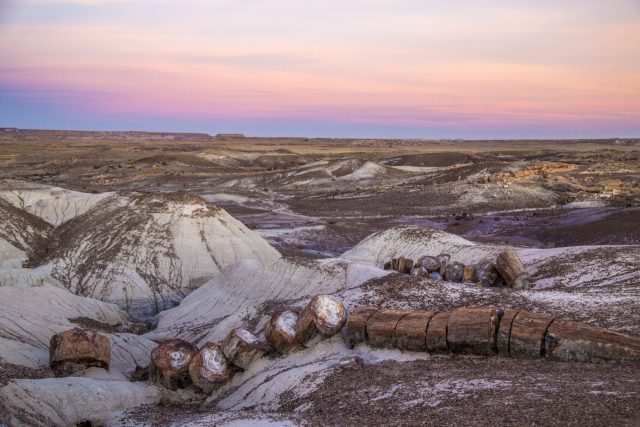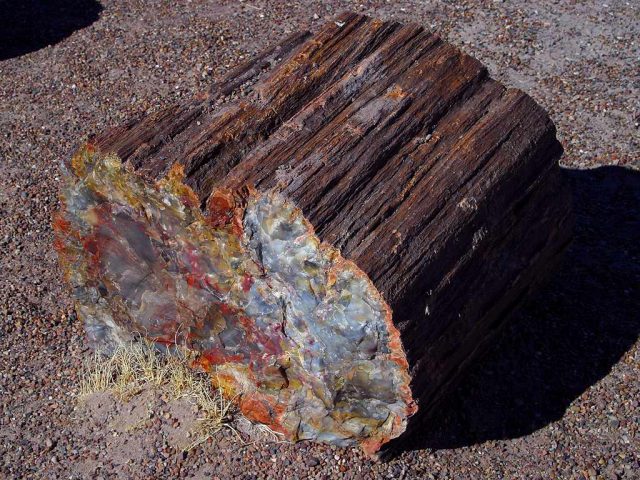Arizona is one of those American states we tend to associate with dry, high winds and desert, the kind of landscape that shrivels skin and makes standing in the sun a risky proposition.
It’s been the backdrop of many a Hollywood western, because long ago folks went west to try their hand at silver mining and other entrepreneurial endeavours. Arizona is symbolic of the independent, high rolling lifestyle of past and present American individualism.
It doesn’t have a landscape we associate with forests and wooded stretches, but once, many millions of years ago, Arizona was just that, and today is home to the Petrified Forest National Park, in the northeastern part of the state.

The story of Arizona’s petrified wood started about 225 million years ago during the Late Triassic period,
It is one of the world’s biggest, natural tourist draws and a rich source of material for researchers. The park covers almost 150 square miles of land, and is at an elevation of more than 5,00 feet. Its vegetation today largely consists of desert plant, like grasses and cacti.
Hard though it is to imagine, about 225 million years ago Arizona abutted a sea on its western edge and was affected by volcanoes spewing ash.

he land within present-day Arizona was at the time a lush subtropical forest filled with the ancestors of present day conifers
As the water receded, many of the trees that made up its forest became mired in soggy earth, and remained there, stuck deep down, out of reach of air and microscopic critters that could damage it and cause it to rot.
Today, those trees, now petrified – dried up, essentially – are an amazing well of research material for scientists, archaeologists and other experts trying to understand what the landscape once looked like, and how it evolved.